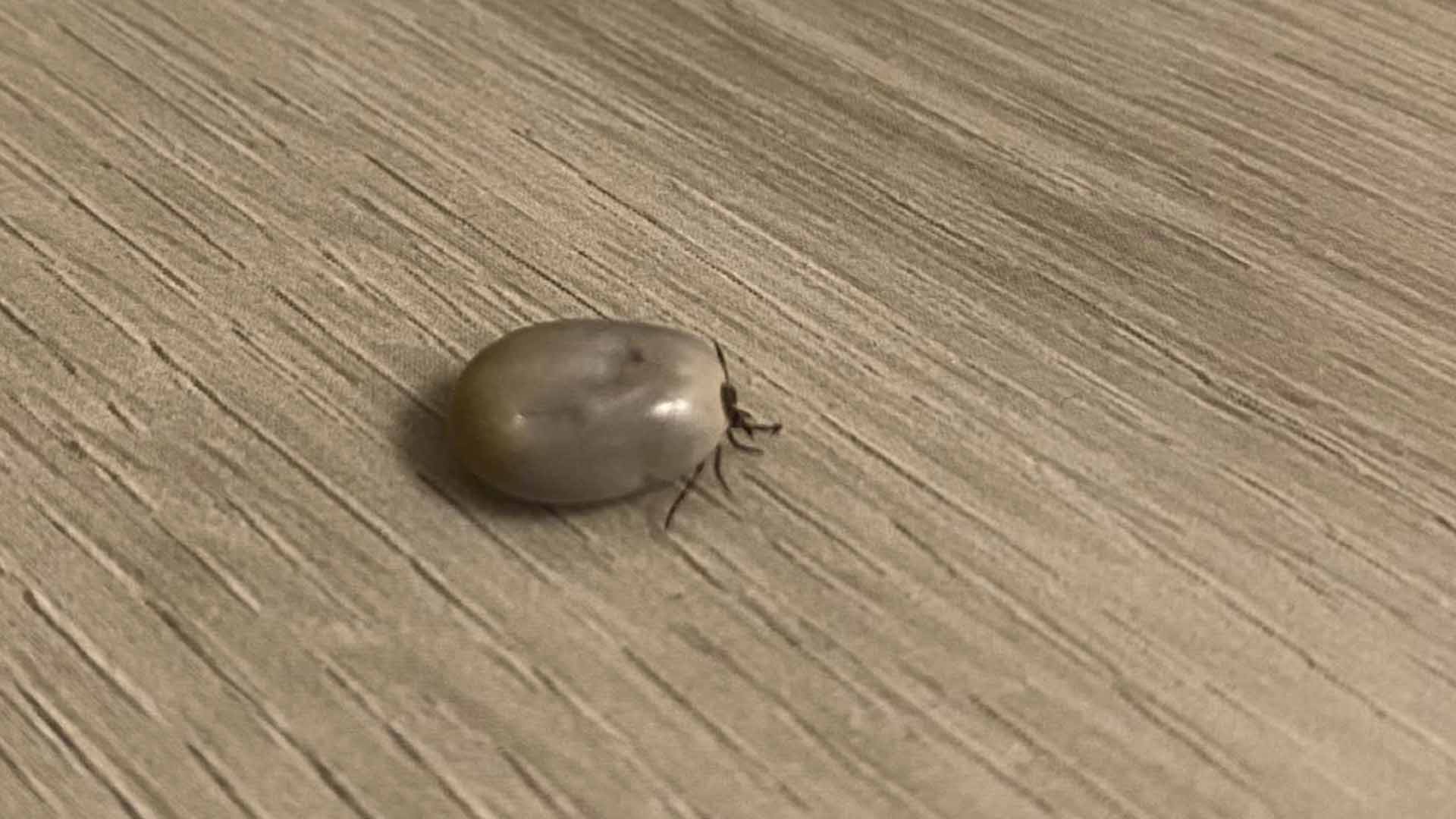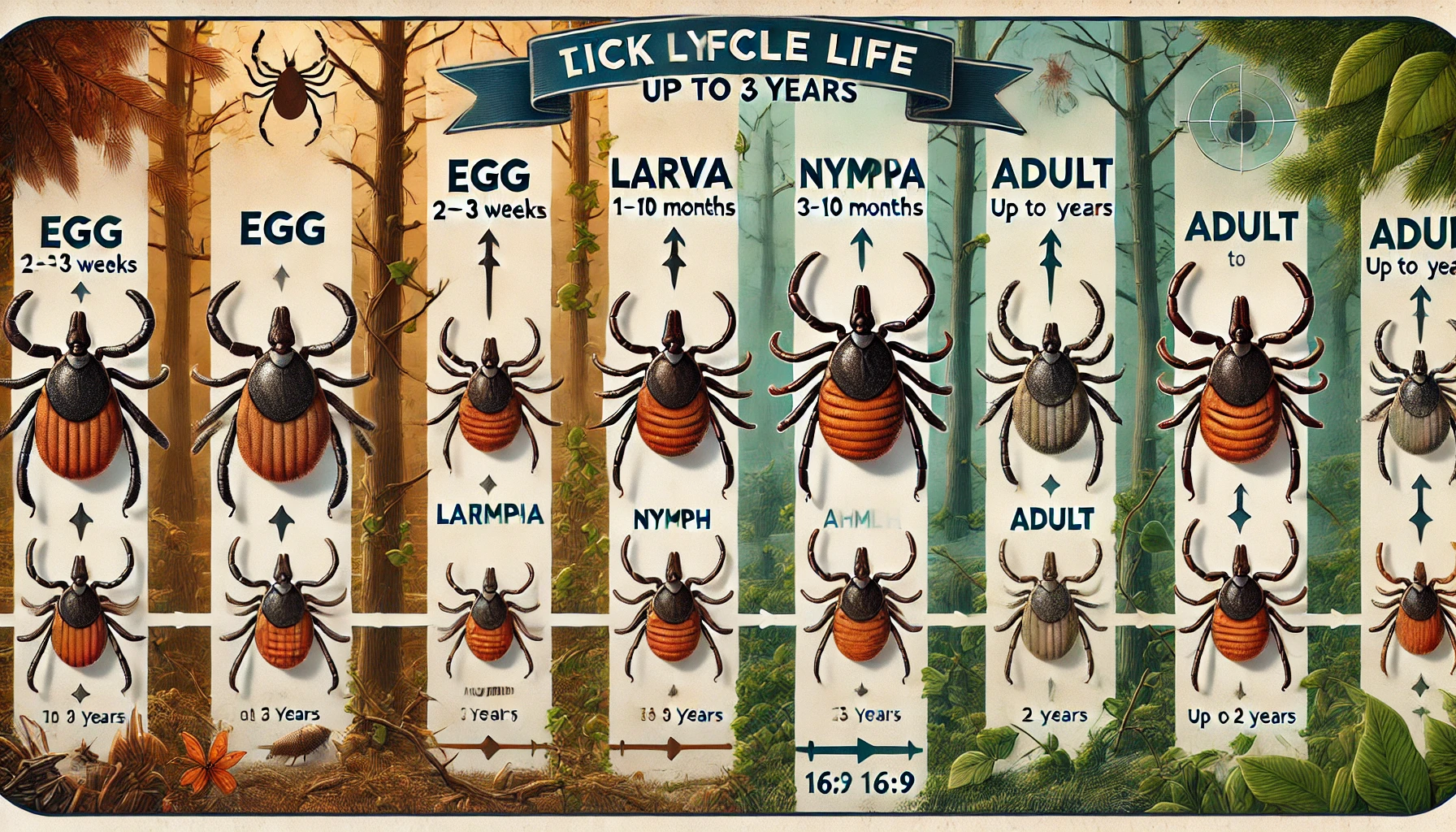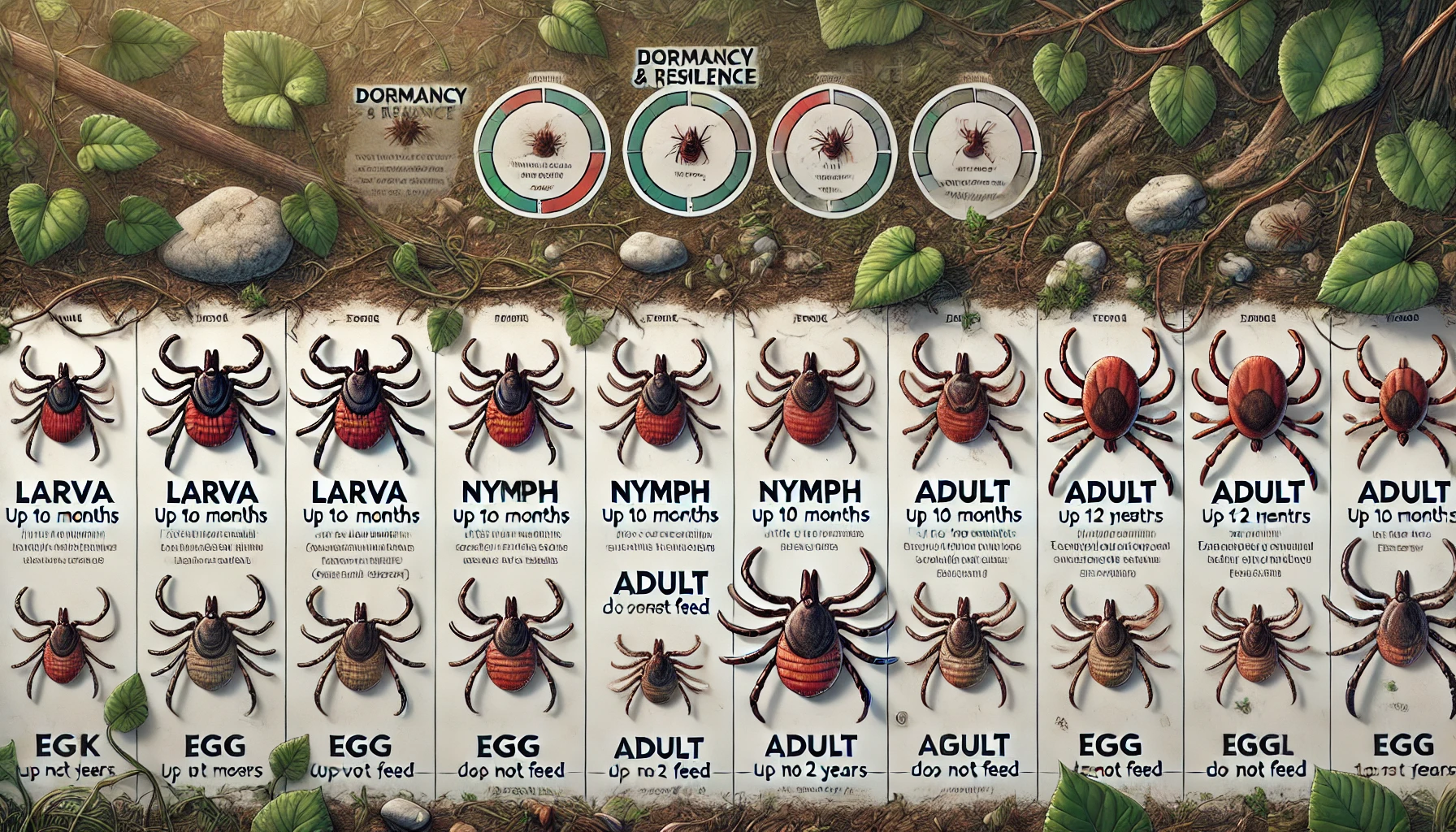Key Takeaways
- Ticks usually live about two to three years.
- There are four stages: egg, larva, nymph, and adult. Each stage (except the egg) needs blood.
- Adult ticks can survive up to two years without feeding—crazy, right?
- Ticks typically don’t do well indoors (except the pesky brown dog tick).
- Keeping your yard clean, using repellents, and doing regular checks can make a huge difference.
 Ticks can be small, but their perseverance? Honestly, this is surprising. Have you ever wondered why these small insects seem almost impossible to escape during the warm months? Understanding how long it lasts and whether it keeps on ticking (no punishment!) It is important to bite your home and family and protect them from diseases. So, let’s include it.
Ticks can be small, but their perseverance? Honestly, this is surprising. Have you ever wondered why these small insects seem almost impossible to escape during the warm months? Understanding how long it lasts and whether it keeps on ticking (no punishment!) It is important to bite your home and family and protect them from diseases. So, let’s include it.


Not getting a solution?
Get your free pest control estimate today!The Tick Lifecycle: What’s Happening?
Do you know what’s fascinating—and slightly disturbing—about ticks? Their lifecycle. It typically takes two to three years, meaning these tiny creatures have impressive patience. Let’s break down each stage. Starting Small: The Egg Stage Female ticks lay thousands of eggs at once, usually hiding them in damp, sheltered spots like leaf piles or under bushes. You won’t spot these eggs easily—they’re tiny and hidden—but warmer weather speeds up their hatching, which explains why ticks appear out of nowhere every spring. Hungry Larvae: Tiny but Determined When eggs hatch, larvae emerge—tiny, six-legged creatures the size of a grain of sand. They immediately start searching for their first meal, usually a small animal like a mouse or bird. Here’s the thing: without a host, these larvae die within weeks or months. But they’re ready to grow into the next stage once they feed. Nymph Stage: Small Size, Big Problem The nymph is slightly larger, but still very little that no one is focused. And this is exactly the reason they are so dangerous. Mainly active in spring and summer, they latch on pets, wildlife and unfortunately, humans. Their small size means that they often do not last long to transmit diseases such as lime disease. Adults: The Final Countdown Adult ticks are where things become more visible—and honestly, creepier. After mating, males usually die quickly, while females feast for days until they’re engorged, then drop off to lay thousands more eggs. Adults prefer more prominent hosts—think deer, dogs, or humans. And yes, that means us again.
Seriously, How Long Can Ticks Survive Without Eating?
You might assume ticks starve quickly without a host, right? Well, not exactly. Unbelievably, ticks have evolved to survive months, sometimes years, without feeding. Nymphs can manage nearly a year unfed, but adult ticks, especially species like deer and American dog ticks, can hang on for up to two years without a meal. They enter something called diapause—a sort of metabolic hibernation—which lets them wait patiently (and creepily) for a host to come by.Can Ticks Survive Indoors?
Thanks to the dry conditions of most homes, ticks don’t usually survive long indoors. You might occasionally find one crawling around, brought in by a pet or your clothing, but they’ll typically dry up and die within a day or two.But hold on—there’s an exception: the brown dog tick. Unlike most ticks, this species loves indoor environments, hiding in carpets, pet bedding, or furniture. If you have pets, especially dogs, you’ll want to stay vigilant—regular vacuuming and frequent checks on bedding can help prevent infestations.

What Makes Ticks Thrive?
- Several factors play into tick survival:
-
Temperature: Warm weather increases tick activity, while mild winters help them survive and come back stronger in spring.
-
Humidity: Ticks thrive in damp, shaded spots like leaf piles, tall grass, and underbrush.
-
Host Availability: More wildlife, pets, and people in an area give ticks more feeding opportunities to grow their population.
-
Natural Predators: Encouraging birds, insects, and small mammals in your yard can naturally help control tick numbers.
Keeping Your Family Safe From Ticks
Let’s face it—ticks are resilient, but they’re not invincible. Here are some practical, effective ways to reduce the risks: Yard Maintenance Matters Ticks love messy, overgrown yards. Regular mowing, trimming, and removing leaf piles or tall grass can drastically cut down their numbers. Try setting up barriers like wood chips or gravel between your lawn and wooded areas—ticks hate crossing these dry spaces. Dress Smart and Use Repellents When heading outdoors, especially in wooded or grassy areas, cover up. Wear long sleeves and pants, and tuck pants into socks. It might look a bit silly, but honestly, it works wonders. EPA-approved insect repellents like DEET or permethrin-treated clothing offer additional protection, making your outdoor adventures safer. Regular Tick Checks After being outside, especially during tick season, make tick checks a routine. Look closely behind knees, waistbands, underarms, neck, ears, and scalp. The quicker you find a tick, the less likely it is to transmit diseases. Removing Ticks the Right Way If you find a tick, don’t panic—but remove it immediately with fine-tipped tweezers. Grip close to your skin and pull upward firmly. Avoid twisting or crushing the tick; this can push infectious material into your skin. After removal, clean the bite area thoroughly. Protect Your Pets Pets are tick magnets. Regular treatments—tick collars, topical applications, or oral medications recommended by vets—can protect your furry friends and reduce the chance of ticks entering your home.
When to Call Professionals
If ticks are becoming a regular nuisance despite your best efforts, consider calling in professional pest control. They’ll apply targeted treatments to areas ticks frequent, dramatically reducing the risk around your home.Remember, ticks may be tough, but you’re tougher. Understanding their lifecycle and taking proactive (but not obsessive!) measures can ensure you and your family enjoy the outdoors without worry. Honestly, ticks don’t stand a chance when you’re informed and prepared.
If you feel things have gone out of control, it is advised to contact pest control professionals. Our team can provide a customized approach to protect your home effectively.
Visit our Species, Control, and DIY Guide sections for additional resources on ticks and ways to tackle a tick infestation.





